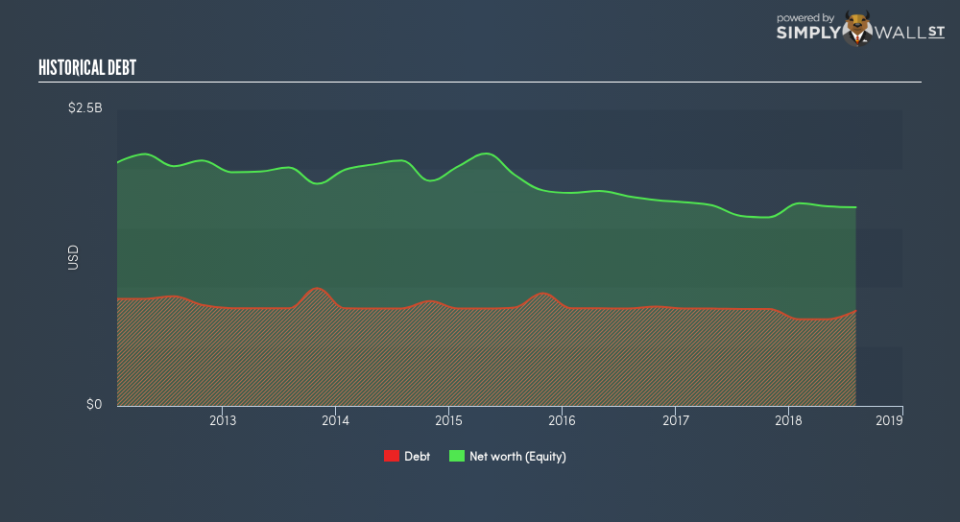Is Dillard’s Inc (NYSE:DDS) A Financially Sound Company?

Mid-caps stocks, like Dillard’s Inc (NYSE:DDS) with a market capitalization of US$2.2b, aren’t the focus of most investors who prefer to direct their investments towards either large-cap or small-cap stocks. However, history shows that overlooked mid-cap companies have performed better on a risk-adjusted manner than the smaller and larger segment of the market. DDS’s financial liquidity and debt position will be analysed in this article, to get an idea of whether the company can fund opportunities for strategic growth and maintain strength through economic downturns. Don’t forget that this is a general and concentrated examination of Dillard’s’s financial health, so you should conduct further analysis into DDS here.
Check out our latest analysis for Dillard’s
How does DDS’s operating cash flow stack up against its debt?
DDS has sustained its debt level by about US$803m over the last 12 months made up of current and long term debt. At this stable level of debt, DDS’s cash and short-term investments stands at US$117m for investing into the business. On top of this, DDS has generated cash from operations of US$237m in the last twelve months, leading to an operating cash to total debt ratio of 29%, meaning that DDS’s current level of operating cash is high enough to cover debt. This ratio can also be a sign of operational efficiency as an alternative to return on assets. In DDS’s case, it is able to generate 0.29x cash from its debt capital.
Does DDS’s liquid assets cover its short-term commitments?
Looking at DDS’s most recent US$1.1b liabilities, it appears that the company has maintained a safe level of current assets to meet its obligations, with the current ratio last standing at 1.71x. Usually, for Multiline Retail companies, this is a suitable ratio as there’s enough of a cash buffer without holding too much capital in low return investments.
Is DDS’s debt level acceptable?
With a debt-to-equity ratio of 48%, DDS can be considered as an above-average leveraged company. This is not uncommon for a mid-cap company given that debt tends to be lower-cost and at times, more accessible. We can check to see whether DDS is able to meet its debt obligations by looking at the net interest coverage ratio. A company generating earnings before interest and tax (EBIT) at least three times its net interest payments is considered financially sound. In DDS’s, case, the ratio of 5.09x suggests that interest is appropriately covered, which means that debtors may be willing to loan the company more money, giving DDS ample headroom to grow its debt facilities.
Next Steps:
Although DDS’s debt level is towards the higher end of the spectrum, its cash flow coverage seems adequate to meet obligations which means its debt is being efficiently utilised. This may mean this is an optimal capital structure for the business, given that it is also meeting its short-term commitment. Keep in mind I haven’t considered other factors such as how DDS has been performing in the past. I recommend you continue to research Dillard’s to get a more holistic view of the mid-cap by looking at:
Future Outlook: What are well-informed industry analysts predicting for DDS’s future growth? Take a look at our free research report of analyst consensus for DDS’s outlook.
Valuation: What is DDS worth today? Is the stock undervalued, even when its growth outlook is factored into its intrinsic value? The intrinsic value infographic in our free research report helps visualize whether DDS is currently mispriced by the market.
Other High-Performing Stocks: Are there other stocks that provide better prospects with proven track records? Explore our free list of these great stocks here.
To help readers see past the short term volatility of the financial market, we aim to bring you a long-term focused research analysis purely driven by fundamental data. Note that our analysis does not factor in the latest price-sensitive company announcements.
The author is an independent contributor and at the time of publication had no position in the stocks mentioned. For errors that warrant correction please contact the editor at editorial-team@simplywallst.com.

